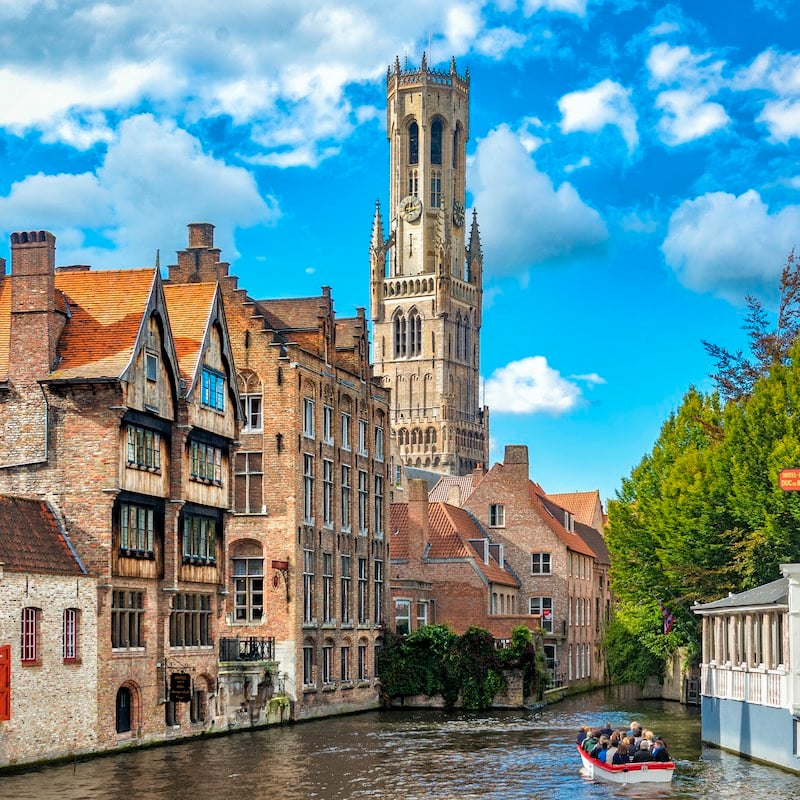Last Updated
Venice stands among Europe’s most iconic destinations.
Traversed by centuries-old canals lined with pastel-colored buildings and beautiful, ornate churches, it is indeed one of humanity’s greatest feats, but there are some huge downsides to Venice first-time visitors often fail to take into account when planning a vacation:
It can get jam-packed with tourists — so much so that local authorities are mulling over introducing a ticketing system to reduce overtourism, on top of already enforcing a cruise ship ban, implementing strict policies governing vacation rentals, and worse even, struggling with drying canals.

Yep, the legendary Venice canals are running dry.
This is one hot, crowded city, but luckily for canal enthusiasts, it is far from being the only one of its kind in the old continent.
Here are 4 great alternative destinations with their own canal systems you can visit instead of Venice this summer:
Aveiro, Portugal
Aptly nicknamed the ‘Portuguese Venice’, Aveiro is an ancient city in Northern Portugal, only one hour’s drive South of trendy Porto.
Much like Venice, it is best known for its various canals, except Aveiro’s were built artificially in the 18th century as a means to bolster local economic growth.
Sitting on the shores of the Atlantic, this medium-sized port is inhabited by around 80,000 people, against the Italian counterpart’s 261,000, making it less densely populated, and more pleasant to stroll in the hot summer months
Top 5 Travel Insurance Plans For 2023 Starting At $10 Per Week

Additionally, while the latter’s cityscape is ocher-colored, Aveiro’s is more distinct for its vibrant tones.
You will find several Iberian-style houses painted in lively hues of red, yellow, and green lining the main canal front, where the traditional barcos moliceiros, the Portuguese gondolas, travel carrying tourists and goods from the Atlantic Sea.
Besides taking a boat tour around the canals, visitors should pay the beautiful Cathedral of Aveiro a visit, a 15th-century Catholic monument in a perfect state of preservation. The historic Aveiro Museum, housed within a medieval convent where a Portuguese princess is entombed, is also not to be missed.

Bruges, Belgium
In the Flemish North of Belgium, where Dutch is the most widely-spoken language, Bruges has been historically dubbed ‘Venice of the North’ due to its masterfully-engineered canals, instrumental to European trade as late as the 20th century, and boundless medieval treasures.
The city center has been listed by UNESCO as one of its World Heritage Sites, and taking a quick glance at its grand canal, bordered by stone buildings, 15th-century churches and their gorgeous belfries, and cobbled promenades, you’ll soon understand why.

Close to 117,000 people live permanently in Bruges, though only 20,000 reside in the compact, walkable, oval-shaped center, meaning it is not as crowded and certainly not as polluted as the sprawling Old Venice.
Bruges is not exactly a hidden gem, featuring on several travel brochures on Belgium and Central Europe, but it is more quaint, arguably more romantic than its more famous Mediterranean competitor, and enjoys a small town feel we are sure couples on a belated, post-COVID honeymoon will appreciate.

Empuriabrava, Spain
Perhaps the least famous entry on this list, Empuriabrava is an affluent residential marina in Spain’s Costa Brava, within the autonomous province of Catalonia, encompassing more than 24 km of navigable waterways and up to 40 km of canals in total.
You read that right.
Although the area has been inhabited since immemorial times, Empuriabrava only flourished as a tourist destination in the mid-seventies, when work on the canals was finished, and guesthouses and luxury stays started popping up.

Unlike Venice, however, it is not a historic city, serving instead as a resort destination.
Although History buffs will appreciate the Roman archaeological zone of Sant Martí d’Empúries located nearby, holidaymakers spending their summers in Empuriabrava are simply searching for some relaxation and quality time in the sun, and there’s nothing wrong with that.
This incredibly exclusive, high-end community has its canals arching along the Gulf of Roses, bounded by the azure waters of the Mediterranean, and the Aiguamolls de l’Empordà, a protected reserve popular among nature seekers.

Wrocław, Poland
The fourth-largest city in Poland, claiming an area of 292.8 km² with over 673,000 residents, Wrocław (Anglicized as Wroclaw) is often overlooked among visitors to this Eastern European country, despite being as cosmopolitan as Warsaw, and just as charming as Krakow or Gdansk.
On top of that, a little-known fact about Wroclaw is that it is an urban conurbation spread across twelve islands on the wide Odra River. With many canals fed by tributaries of the Odra and over 200 bridges, it’s no wonder it is sometimes called the ‘Polish Venice’.

Similarly to Venice, other than the busy watercourses, Wroclaw has a host of world-class attractions on land, such as a Gothic town hall erected as early as the 13th century, the towering Wroclaw Cathedral, sitting imposingly on Ostrów Tumski island, and a pedestrianized Market Square.
If you’ve been to Poland already, you know most of what you see around its Old Towns has been rebuilt or renovated following the devastating bombings of World War II.
Wroclaw is no exception, but a majority of the structures flanking Market Square have remained intact, making it a unique heritage site for Poland.

Heading to Europe this summer?
Find more unique off-path destinations to explore here.
Traveler Alert: Don’t Forget Travel Insurance For Your Next Trip!
↓ Join Our Community ↓
The Travel Off Path Community FB group has all the latest reopening news, conversations, and Q&A’s happening daily!

SUBSCRIBE TO OUR LATEST POSTS
Enter your email address to subscribe to Travel Off Path’s latest breaking travel news, straight to your inbox.
This article originally appeared on TravelOffPath.com
Source link

